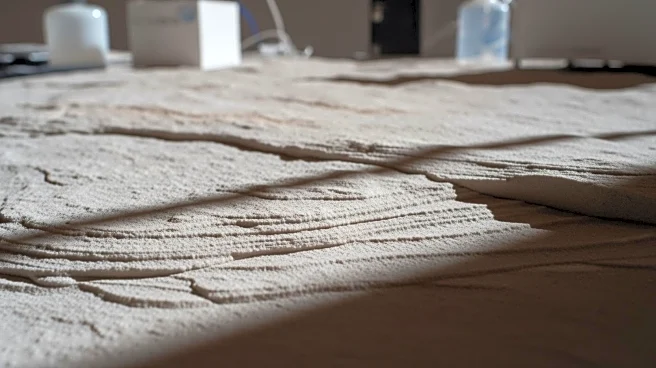What's Happening?
A recent study published in Nature investigates the impact of dry-wet cycles in sodium sulfate solution on the thermal effusivity of grotto sandstone. The research utilized infrared thermography to measure
thermal effusivity, employing both passive and active methods. The study involved sandstone samples from the Yuanjue Cave stone-carving area in Sichuan Province, China, subjected to controlled dry-wet cycles to simulate deterioration. The samples underwent various tests, including scanning electron microscopy and X-ray diffraction, to analyze changes in thermal properties. The findings aim to understand the evolution of thermal effusivity in sandstone under accelerated deterioration conditions.
Why It's Important?
The study's findings have implications for preserving cultural heritage sites, particularly those with sandstone structures vulnerable to weathering. Understanding thermal effusivity changes can inform conservation strategies, potentially extending the lifespan of historical monuments. Additionally, the research highlights the utility of infrared thermography in non-contact measurement of rock properties, offering a more efficient and less invasive method for assessing material deterioration. This could lead to advancements in geological studies and conservation techniques, benefiting both scientific research and heritage preservation efforts.












